UX Design Principles
Having built user experiences on several SaaS platforms and other applications over the years, I can’t stress enough how user experience is crucial in determining a product’s success. With the rise of SaaS platforms, the competition has become fierce, making it essential for product designers and developers to focus on attracting new users while retaining existing ones.
A “sticky” product that provides an excellent user experience throughout the user journey is the key to retaining users. Such a product offers advanced inclusive features that make it easy for users to navigate and use it effectively.
However, adding various features to a product without proper organization can lead to complexity in the user journey. Also making it challenging for users to identify the required feature.
While these features may be helpful for the product, they can cause instability in the user experience. It is essential to arrange the features in a categorized manner to reduce complexity. In turn ensuring that the product is user-friendly and intuitive.
In today’s fast-paced world, users seek products that are easy to use, with features that make their lives more comfortable.
A poorly organized product will not only lead to an inability to attract new users but will also make it difficult to retain existing ones.
It is, therefore, vital to focus on creating a product that offers a streamlined user experience with advanced features that are easy to access and use.
As a software product expert, I believe that a sticky product with advanced inclusive features and proper organization of its various features is the key to success in the competitive world of SaaS platforms.
By prioritizing user experience and focusing on creating a user-friendly and intuitive product, developers can attract new users while retaining existing ones, ensuring long-term success.
“A simple design with real stickiness captures the user’s attention, rather than bug them.”
Focus on the User’s Needs
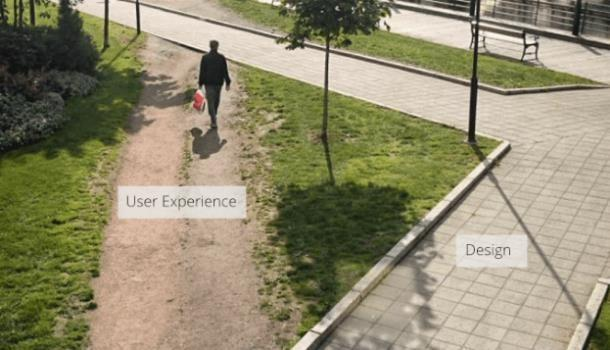
Source: Reddit Posted by u/dzstormers 6 years ago
In the realm of user experience (UX), the letter “U” represents the user, while the letter “X” denotes the experience. At the core of building a successful product lies the UX design principles of putting the user first.
A designer must adopt a user-centered approach that caters to the user’s needs. Achieving this requires communication with the user and the ability to empathize with their persona during the design process.
The ultimate goal of UX design principles are to create an outcome that not only satisfies the user but also helps them achieve their objectives throughout the user journey.
In UX design principles, it is more important to measure the effectiveness of a design rather than how the user feels about it. To gain a user’s perspective, UX research and UX audit are two valuable tools. This will help understand user needs.
The design process entails a collective consideration of user needs, considering the user’s context, such as their demographics, goals, pain points, and familiarity with technology. Additionally, identifying the user’s emotions through empathy mapping and user journey analysis is an essential aspect of UX design principles.
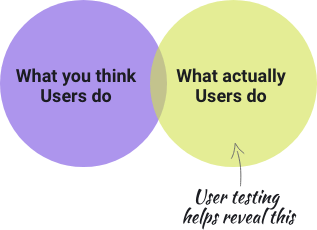
Source: Impelsys UX Team
The primary objective of UX design is to address user problems through usability testing. Every element in the design, such as icons, buttons, or images, should have a clear meaning and purpose that guides the user toward a specific task. It is crucial to conduct usability tests during the prototype phase before launching the product to ensure that it meets the user’s expectations and requirements.
In summary, the user is the focal point of UX design, and designing with empathy and understanding is crucial in creating a successful product. By employing tools such as UX research and UX audit, designers can gain valuable insights into user needs, leading to the development of an effective user-centered design. Usability testing throughout the design process is essential to ensure that every design element has a clear purpose and meaning, guiding the user toward their goals.
Importance of User Language
Effective communication is crucial to creating a successful design, and user language plays a vital role in achieving this. It encompasses the visuals, word formatting, and overall tone of the product’s interface. Complex technical terms and internet jargon can confuse and detract from the user experience. Therefore, it is essential to use simple and easy-to-understand language that appeals to a broad range of users.
By incorporating simple language, designers can create a product that is easier to navigate and understand. This, in turn, leads to increased user engagement and retention, as users are more likely to stick with a product that meets their needs and is easy to use. Using user language in a design can also help establish a connection between the user and the product, leading to greater user satisfaction and loyalty.
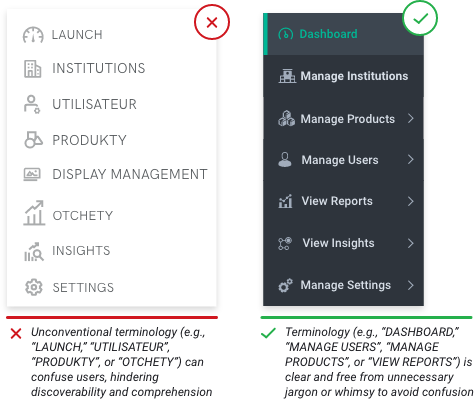
Source: Impelsys UX Team
Important points to make the language more readable:
- Defining the audience: Searching for needs based on user preferability and the goals that they need to achieve by interacting with the product
- Constructing a design template: Focus on 30% context and 70% visuals that appeal to the user at any given time
- Communication style: Usage of friendly and attractive language
The typography of the user language in design should be from real life; the designer should use everyday words that can be understood even by a grade-five child.
How often do you answer “Yes” when somebody asks you a question? For example, when you request a peer, “Can I use your pen?” the answer might be “Yes” or “Okay.” Similarly, we use such ideas in design language.
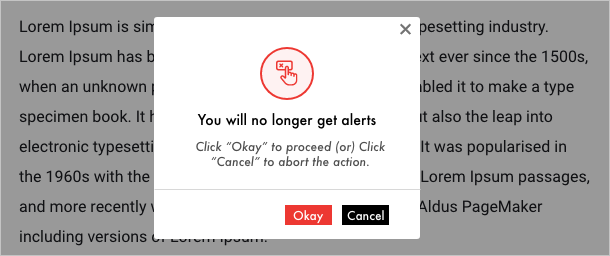
Source: Impelsys UX Team
Besides typography, iconography is also one of the critical aspects of user language in design. For example, the concept of the Notepad icon on a Mac can be easily recognized by even a first-time user who is used to a PC.
![]()
Source: Screenshot from Mac Book Pro Laptop
In summary, using user language in design is vital to creating an effective and user-friendly product. By employing simple language that any user can understand, designers can increase the product’s stickiness, increasing user engagement and retention.
Ultimately, user language is a powerful tool that can help establish a connection between the user and the product, resulting in greater user satisfaction and loyalty.
Categorization of the Content
An effective organization of content is critical to providing users with a clear understanding of a product’s layout. A hierarchical format is an excellent tool to achieve this. For instance, when users navigate a website, they typically encounter a navigation bar displaying main sections such as Home Screen, Library, Search, Cart, and more. These sections form the primary hierarchy.
Upon hovering over a primary hierarchy section, the sub-sections will appear, creating a sequential and organized layout that enables users to navigate the website easily.
Using a hierarchical structure, designers can make a product’s layout more intuitive. It ensures users can quickly and efficiently find what they need. This, in turn, enhances the user experience and increases user engagement and retention.
Site Map – An essential aspect of designing
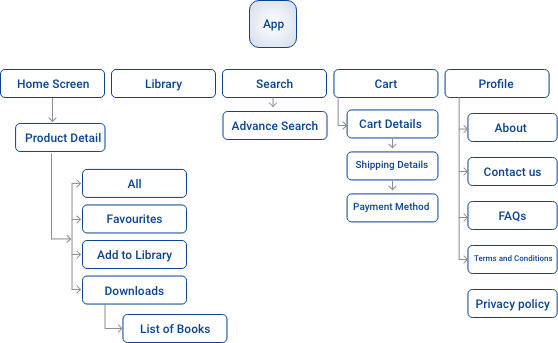
Source: Impelsys UX Team
To understand content categorization better, a site map is an essential aspect of designing. Frequent addition of new features sequentially to the site map will provide a smooth user experience.
The logical rearrangement of the categories in the site map will be helpful for users to navigate the website easily, thereby providing more stickiness to the product.
Call To Action (CTA)
A “call to action” button is crucial on every page. In mobile apps, buttons should be between 42 and 52 pixels. If the size range is smaller, the user may struggle to access the button, and if it is broader, it may negatively affect the page’s appearance.
The website’s accessibility depends on the button and typography size. To comply with WCAG 2.1 guidelines and ensure website accessibility, button color and typography should be chosen carefully.

Source: Impelsys UX Team
Consistent with the Design
Users can easily adapt to a new design or product with familiar elements. Consistency in design not only attracts new users but also makes it easy for them to access the product.
On the other hand, an inconsistent design can discourage users from trying the product. For instance, if a user knows how to use Microsoft Word, they are likely to find other office products such as PowerPoint or Outlook easy to use as well.

Source: Impelsys UX Team
UX and UI designers must prioritize consistency and user comfort throughout the design process. Continuously adding new features while creating a new product can negatively impact the ease. And make it more difficult for users to become familiar with the UI. Therefore, it is essential to balance innovation and usability to ensure that the design meets the users’ needs.
Designers should consider various aspects of consistency in their designs, including visual, functional, and expectational consistency.
-
Visual consistency
Refers to maintaining a consistent look and feel for visual elements such as typography, color, symbols, buttons, and other design elements throughout the product.
-
Functional consistency
Involves managing consistency in using functional elements to avoid confusion for users who may not expect certain effects.
-
Expectational consistency
Involves meeting user expectations in designing a new product instead of adding new elements that could create ambiguity and frustration.
Simple Design with Rich Experience
Simplicity and minimalism are critical aspects of effective design. Users should feel comfortable using a product, whether they are new to it or experienced. The visual and functional elements of the product should be designed to help users recall their prior experiences.
It enhances their overall experience and creating a stronger attachment to the product. This stickiness is essential for building a loyal user base and increasing engagement over time.
In summary
Designing simple and intuitive products is crucial for creating a positive user experience. By focusing on providing a comfortable and familiar journey, users are more likely to recall their prior experiences. This developes an attachment to the product.
Ultimately, this enhances user engagement and retention, creating a loyal user base that is more likely to recommend the product to others.
Authored by – Rajesh Bandila